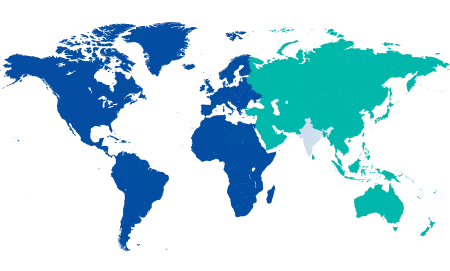
The question “What is Trigeminal Neuralgia?” often arises among people who suffer from sudden intense facial pain, often presenting as cheek pain one side. It is a chronic neurological condition that affects more than 100,000 people annually and has a higher prevalence in women. It can occur at any age, although it is most common in people above the age of 50. Everyday activities can trigger the condition, causing significant distress to individuals and interfering with their daily life, sleep and mental health. Since symptoms tend to fluctuate, they are often mistaken for other conditions like dental issues or sinus infections, leading to misdiagnosis. Early intervention is therefore crucial to prevent symptoms from worsening and to minimize their impact on an individual’s quality of life.
Synopsis
- What is Trigeminal Neuralgia?
- Common Causes and Triggers of Trigeminal Neuralgia
- Symptoms of Trigeminal Neuralgia
- Diagnosis of Trigeminal Neuralgia
- Medical Treatments for Trigeminal Neuralgia
- Surgical Options for Severe Cases
- Natural Remedies and Lifestyle Management
- Prognosis and Long-Term Outlook
- Conclusion
What is Trigeminal Neuralgia?
Trigeminal Neuralgia, also known as Tic Douloureux, is a chronic pain condition that directly affects the trigeminal nerve, the main nerve responsible for sensation in the face. The pain is often described as the worst facial pain, ranging from mild to severe. Its onset is sudden, severe, electric shock-like, or stabbing pain and is usually felt in the jaw, lips, gums, or cheek, but may also occur in other parts of the face. The facial nerve pain can last from a few seconds to several minutes once or multiple times a day. For Trigeminal Neuralgia treatment in Salem, you can visit a top hospital that specializes in diagnosing and treating this condition effectively.
Common Causes and Triggers of Trigeminal Neuralgia
While causes trigeminal neuralgia is not fully understood. However, known trigeminal neuralgia causes include an abnormal blood vessel loop pressing on the trigeminal nerve, or a tumour or other growth pressing on the nerve. Sometimes, it can occur due to facial trauma, stroke, dental procedures, multiple sclerosis, or injuries to the face or head. Common trigeminal neuralgia triggers may include routine activities like speaking, eating, or sometimes just touching the face.
Symptoms of Trigeminal Neuralgia
Common trigeminal neuralgia symptoms include sudden, severe, electric shock-like pain in one or more of the branches of the trigeminal nerve (the fifth cranial nerve). The pain may involve the forehead, cheek, lower jaw, or gums and may last anywhere from a few seconds to several minutes.
Other symptoms include:
-
Aching, burning, or stabbing sensation
-
Tingling in face or numbness
-
Cheek pain one side of the face
-
Headache or migraine-like symptoms
-
Facial muscle pain that is worse with cold temperatures or exposure to wind
-
Pain is triggered by touching the face, eating, talking, or brushing teeth
If you’re experiencing any symptoms mentioned above, you should consult a neurologist/Neurosurgeon without delay. Please book an appointment with a Consultant – Neurology & Neurosurgery at Manipal Hospital Salem for a thorough diagnosis and prompt treatment for your condition.
Diagnosis of Trigeminal Neuralgia
Trigeminal neuralgia is diagnosed based on the type of pain, location, severity, and activities that may trigger this condition. The doctor may review the patient’s clinical history, conduct neurological exams, and order an MRI to confirm a trigeminal neuralgia diagnosis.
Medical Treatments for Trigeminal Neuralgia
“How to cure trigeminal neuralgia?” is a common question asked by people suffering from this condition. The standard approach to trigeminal neuralgia treatment is to start medical management with medications that can help reduce the pain intensity, frequency and prevent it from relapse. Trigeminal Neuralgia medication often includes carbamazepine, a type of anticonvulsant that is effective at reducing pain. Other medications that can be prescribed include baclofen, gabapentin, lamotrigine, pregabalin, and lamotrigine.
Surgical Options for Severe Cases
In cases where medication is not giving the desired results, trigeminal neuralgia surgery may be recommended. To minimize pain and relieve pressure on the trigeminal nerve, microvascular decompression, radiofrequency rhizotomy, and gamma knife radiosurgery procedures may be recommended. Other trigeminal neuralgia treatment options may include nerve blocks which can assist in blocking pain signals from reaching the brain. These include percutaneous glycerol rhizolysis and balloon compression of the Gasserian Ganglion.
Natural Remedies and Lifestyle Management
Besides medication and surgery, how to cure trigeminal neuralgia naturally? Above all, it is important for individuals to discover their triggers and actively avoid them. Alternative therapies such as acupuncture, massage and biofeedback may also be beneficial in order to help mitigate pain and discomfort. Developing a healthy diet that is rich in vitamins B12, B6 and omega-3 fatty acids also provide trigeminal neuralgia pain relief by lowering inflammation. Moreover, since stress can worsen pain, practices like yoga, meditation and deep breathing exercises offer additional relief by reducing the frequency and intensity of episodes.
Prognosis and Long-Term Outlook
The condition is often associated with neuropathic facial pain. As a form of chronic facial pain, trigeminal neuralgia prognosis may vary among individuals, with some experiencing remission and others needing ongoing care due to recurrence. For the best possible long-term outcomes, symptoms need to be carefully monitored through regular follow-ups and the treatment plan needs to be adjusted accordingly.
Conclusion
Trigeminal neuralgia can be a challenging condition to manage, but with the right combination of medications and other treatments, it is possible to control the pain and improve your quality of life. It is vital to work with a doctor and find the right treatment plan for your specific situation. When initial symptoms appear, don’t ignore them or delay seeking help. Consult a neurosurgeon at Manipal Hospital Salem for diagnosis and treatment.
FAQ's
Although the exact cause of trigeminal neuralgia remains unknown, it is known to be caused by pressure on the trigeminal nerve either by an abnormal blood vessel loop or a tumour or other growth.
Trigeminal neuralgia can begin at any age, but it is most often diagnosed in individuals over the age of 50.
The diagnosis of trigeminal neuralgia is based on type, severity and location of pain and also potential descriptors. Neurological exams and MRI scans are often used to confirm the diagnosis.
Yes. Most TN Patients suffer pain in the tooth socket of the upper jaw. If not diagnosed correctly, it could end up with unnecessary tooth extraction.
Trigeminal neuralgia cannot be cured but can be controlled with treatment. Treatment options may include medications, nerve blocks, and surgery which can help reduce the frequency and intensity of the pain.
Alternative therapies for TN include acupuncture, massage and biofeedback. Stress-reducing activities and a balanced diet rich in essential vitamins B12, B6, and omega-3 fatty acids also alleviate pain and promote healing.





















 7 Min Read
7 Min Read












__Its_Type_and_Benefits.png)





